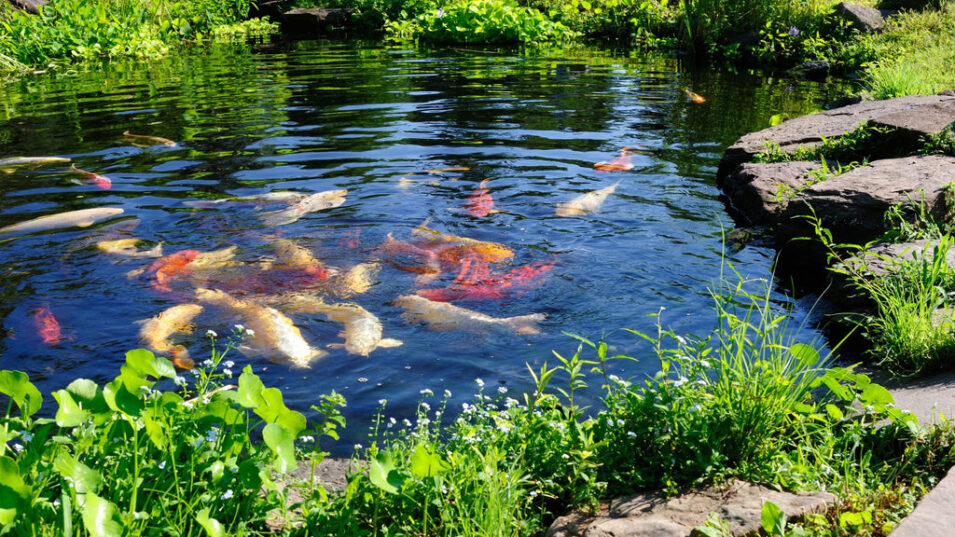With the right seasonal care, you can keep your pond water looking crystal clear and ensure your fish, plants, and ecosystem thrive no matter the season.
Let me share some tried-and-true tips on how I maintain my pond during the changing seasons.
Spring – Time for a Fresh Start
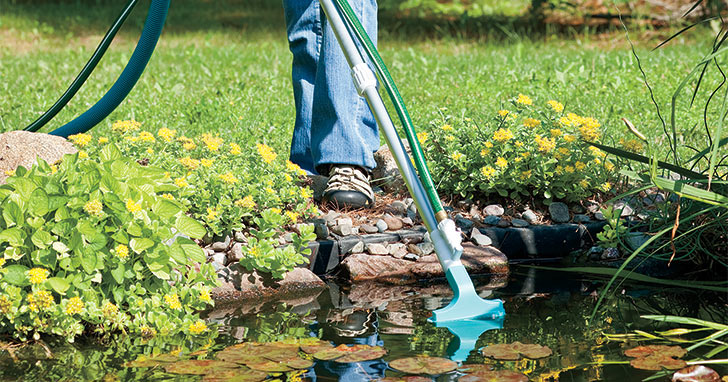
As the temperatures rise, it’s time to roll up your sleeves and give your pond a little TLC.
Spring Clean-Up
First, I like to give my pond a deep clean. Over winter, debris like leaves and twigs settle at the bottom, and that muck can cause poor water quality.
- Remove debris: Grab a net or pond vacuum to scoop out all the leaves and organic waste.
- Prune your plants: Cut back dead growth on aquatic plants to prevent them from rotting in the water.
- Clean filters and pumps: Now’s the time to clean your pond’s filter and check your pump for any issues. You’d be surprised how much gunk can build up over the cold months. If you’re not sure how to do it, check out www.thatpondguy.co.uk.
Reintroduce Beneficial Bacteria
Beneficial bacteria help keep the water balanced by breaking down waste and maintaining a healthy nitrogen cycle. I always start the season by adding a dose of good bacteria to jumpstart the biological filtration in my pond.
Fish Feeding Habits
When temperatures are still cool (around 50°F), your fish’s metabolism is slower. So, start with light feeding. I use a wheat-germ-based food that’s easy on their digestive system. Once the water warms up, you can switch to a higher-protein diet, and you’ll see those fish becoming more active.
Summer – Try Keeping It Cool and Balanced
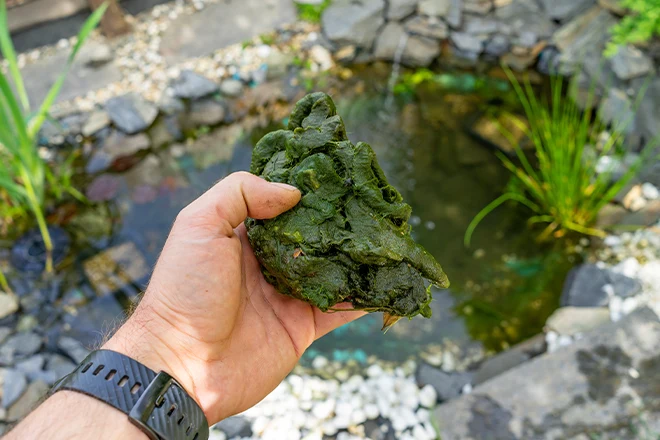
Summer can be a magical time for ponds. Everything’s in full bloom, the water’s warm, and your fish are probably loving life. But with heat and sun, there are some things you’ll want to keep an eye on.
Managing Algae Blooms
While a little bit of algae is normal, too much can block light and starve your pond’s plants of oxygen.
I like to keep a portion of the water shaded. Floating plants like water lilies or water hyacinths are great because they reduce sunlight penetration.
Barley straw: It’s an old trick, but I swear by barley straw bales. As it decomposes, it releases compounds that prevent algae from taking over.
Maintain Proper Oxygen Levels
Hot water holds less oxygen, which can stress out fish and other wildlife. Make sure you have good aeration, especially if your pond is small or has a high fish load.
Add a fountain or waterfall
Not only do they look beautiful, but they also increase oxygen levels. Also, consider installing an aerator, especially during heatwaves.
Fish Care in Hot Weather
During summer, fish can become more active and need more food. I feed mine higher-protein food during the warm months, but I make sure not to overfeed. Uneaten food can lead to poor water quality and algae blooms.
Keep an Eye on Water Evaporation
Water can evaporate quickly during those hot summer days, so I make a habit of topping off my pond regularly with dechlorinated water. It’s a small task that makes a big difference in keeping the ecosystem balanced.
Fall – Prepare Everything for the Cold
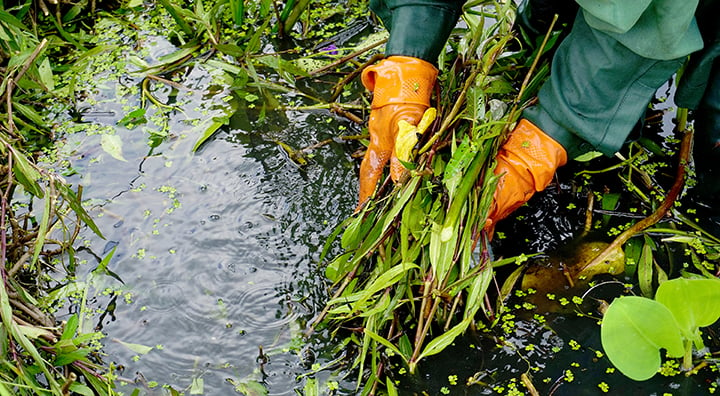
Fall is the time to start preparing for the upcoming winter. As temperatures drop, it’s important to help your pond transition smoothly.
One of the biggest challenges in autumn is the sheer number of leaves that fall into the water. If left unchecked, they can decompose and cause issues with water quality.
- Install a net: I use a pond net over the surface to catch leaves before they hit the water.
- Regular clean-ups: Even with a net, some leaves always find their way in. A quick skim once a week helps to keep things tidy.
Cut Back Plants
As plants begin to die off in the cooler weather, it’s best to trim them back before they decay in the pond. I usually cut down my marginal plants and remove any floating plants that are no longer thriving.
Reduce Fish Feeding
As the water cools (below 50°F), fish metabolism slows down, and they enter a state of semi-hibernation. I gradually reduce feeding and stop altogether when the water gets colder. They’ll live off the natural resources in the pond throughout winter.
Clean Filters and Remove Equipment
Fall is also a good time to clean the filters one more time before winter sets in. If you live in an area where temperatures drop below freezing, I recommend removing pumps or moving them to the deepest part of the pond to prevent damage from ice.
Winter – Just Keep Things Stable
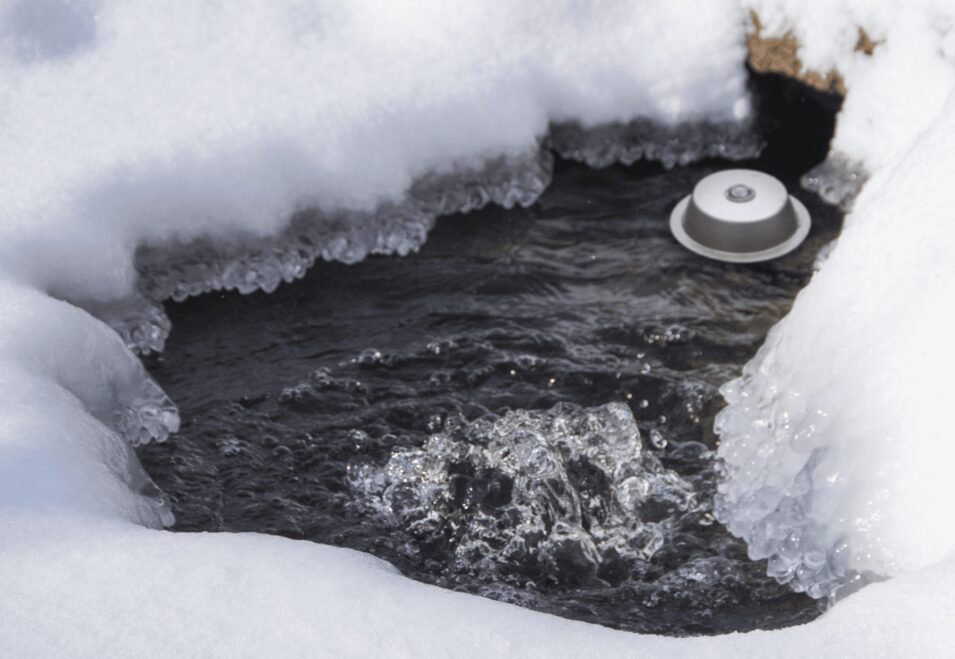
For many pond owners, winter can feel like a waiting game. But even though you’re not actively managing your pond as much, there are still a few key tasks to keep things running smoothly.
Prevent Ice from Fully Covering the Pond
When ice forms across the entire surface of the pond, gases like ammonia and carbon dioxide can build up under the ice and harm your fish. I always make sure to keep a small section of the pond ice-free to allow for gas exchange.
Use a pond de-icer – I place a floating pond heater in the water when temperatures really drop. It keeps a small area free of ice without overheating the water.
Aerators help: Even in winter, aerators can be useful. They create movement and prevent a full freeze, although you’ll want to keep them in a shallow area to avoid disturbing the deeper water where your fish are hibernating.
Avoid Breaking Ice by Force
Tempting as it may be to smash through ice, don’t! The shockwaves from breaking ice can stress or even harm fish. Instead, use warm water or a de-icer to slowly melt a hole if needed.
Year-Round Tips
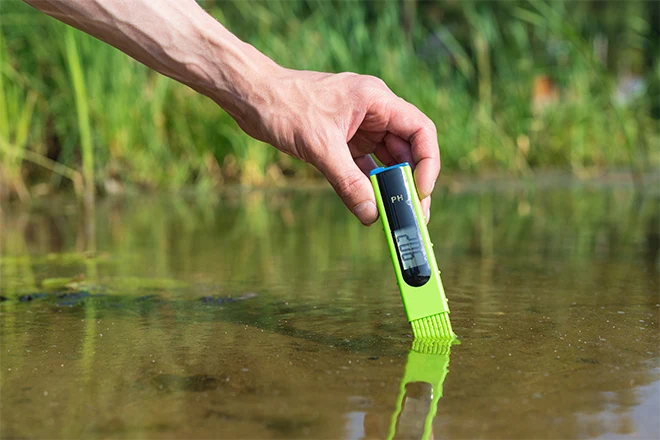
Though each season comes with its own challenges, there are some things I do year-round to ensure my pond stays healthy.
Test Water Quality Regularly
A simple water testing kit is one of the best tools you can have. It helps me monitor ammonia, nitrite, pH, and other parameters that can affect the health of the pond’s inhabitants. I do this about once a month, regardless of the season.
Regular Skimming and Debris Removal
Even in winter, I keep an eye on debris build-up. A quick skim every few weeks makes spring cleaning much easier and keeps things looking nice.
Keep an Eye on Your Fish
Healthy fish are one of the best indicators of a healthy pond. I always make time to observe them—if they’re swimming and behaving normally, it’s a good sign the water quality is where it should be. If you notice sluggish behavior or unusual marks, it might be a clue something’s off.
But Before You Do Anything – Know Your Climate!
Every pond is different, especially depending on where you live. What works for me in my climate might need tweaking for someone in a warmer or colder region. Pay attention to local temperatures and adjust your pond care routine accordingly.
In Summary
By breaking it down season by season and staying on top of small tasks, you can maintain a beautiful, thriving pond without too much hassle. Remember to enjoy the process!

